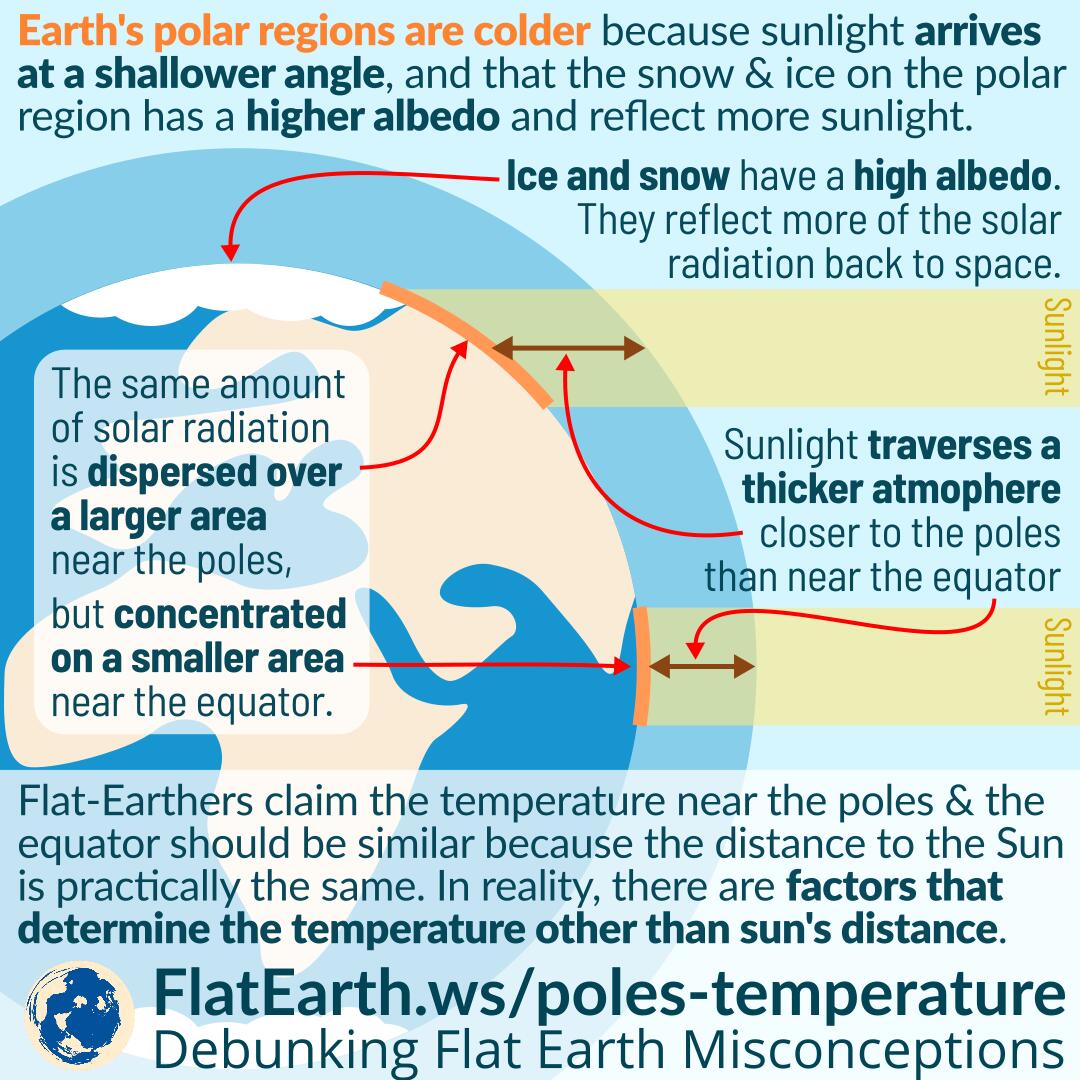Polar areas have a lower temperature than areas closer to the equator because the same amount of solar radiation is dispersed over a larger area, and the surface of ice and snow reflects more sunlight than darker surfaces.
In the spherical Earth model, the distance to the Sun from the poles and the equator is practically the same because the sun is much farther than the distance between any two locations on Earth. Because of that reason, flat-Earthers then claim that the temperature in polar and equatorial areas should be the same. In reality, the distance to the sun is not the only factor that can determine temperature.
Continue reading “Temperature Differences Between the Equatorial & Polar Areas”



